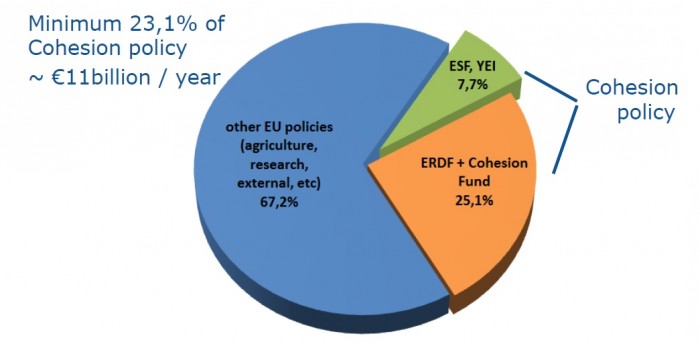EU Partnership Agreements: towards major social policies investment
Employment and Social Affairs 17 November 2014By the 30th of October, 27 out of 28 EU Partnership Agreements (with the only exception of Ireland) were adopted by the European Commission paving the way to the new European cohesion policy.
A total budget of about € 352 billion for the period 2014-2020 is going to be invested in Europe’s regions and cities to promote competitiveness, growth and jobs and to reduce inequalities and divergences among the EU.
The new Partnership Agreements (PA) set out how member states should use structural and investment funds (ESIF) during the period 2014-2020. Among the different funds of the ESIF, the European Social Fund (ESF) represents the most important instrument to tackle unemployment, improve education opportunities, help disadvantaged people at risk of poverty and fight social exclusion. After almost 25 years of gradual decrease, the ESF is about to count for the 23% of the overall cohesion policy budget. In comparison with the financial period 2007-2013, the actual budget provided under the ESF has slightly increased and it is expected to reach more than € 80 billion. Furthermore, an extra amount of at least € 6 billion coming from the Youth Employment Initiative will be used in synergies with the ESF to finance youth employment targeted programs.
Although all EU regions will benefit from the ESF, levels of funding vary from one region to another according to their relative wealth in comparison to the EU average.
The Commission is now examining the submitted Operational Program (only 6 were adopted so far) making sure that, as far as employment and social policies are concerned, the EU2020 objectives of employment, education and social inclusion will be efficiently addressed by the Member States.



